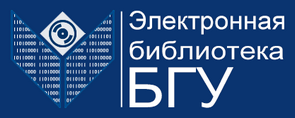Пожалуйста, используйте этот идентификатор, чтобы цитировать или ссылаться на этот документ:
https://elib.bsu.by/handle/123456789/288894Полная запись метаданных
| Поле DC | Значение | Язык |
|---|---|---|
| dc.contributor.author | Kostina, N. A. | - |
| dc.contributor.author | Kislov, D. A. | - |
| dc.contributor.author | Ivinskaya, A. N. | - |
| dc.contributor.author | Proskurin, A. | - |
| dc.contributor.author | Redka, D. N. | - |
| dc.contributor.author | Novitsky, Andrey V. | - |
| dc.contributor.author | Ginzburg, P. | - |
| dc.contributor.author | Shalin, A. S. | - |
| dc.date.accessioned | 2022-11-11T11:47:49Z | - |
| dc.date.available | 2022-11-11T11:47:49Z | - |
| dc.date.issued | 2020 | - |
| dc.identifier.citation | ACS Photonics 2020;7(2):425-433. | ru |
| dc.identifier.uri | https://elib.bsu.by/handle/123456789/288894 | - |
| dc.description.abstract | Carefully designed nanostructures can inspire a new type of optomechanical interactions and allow surpassing limitations set by classical diffractive optical elements. Apart from strong near-field localization, a nanostructured environment allows controlling scattering channels and might tailor many-body interactions. Here we investigate an effect of optical binding, where several particles demonstrate a collective mechanical behavior of bunching together in a light field. In contrast to classical binding, where separation distances between particles are diffraction limited, an auxiliary hyperbolic metasurface is shown here to break this barrier by introducing several controllable near-field interaction channels. Strong material dispersion of the hyperbolic metamaterial along with high spatial confinement of optical modes, which it supports, allows achieving superior tuning capabilities and efficient control over binding distances on the nanoscale. In addition, a careful choice of the metamaterial slab's thickness enables decreasing optical binding distances by orders of magnitude compared to free space scenarios due to the multiple reflections of volumetric modes from the substrate. Auxiliary tunable metamaterials, which allow controlling collective optomechanical interactions on the nanoscale, open a venue for new investigations including collective nanofluidic interactions, triggered biochemical reactions, and many others. | ru |
| dc.description.sponsorship | The work has been supported in part by ERC StG “In Motion” and the PAZY Foundation. A.S.S. acknowledges the support of the Russian Fund for Basic Research within the projects 18-02-00414 and 18-52-00005. Simulations of the optical forces have been supported by the Russian Science Foundation (Project No. 18-72-10127). A.N. thanks the Belarusian Republican Foundation for Fundamental Research (Project No. F18R-021). | ru |
| dc.language.iso | en | ru |
| dc.publisher | American Chemical Society | ru |
| dc.rights | info:eu-repo/semantics/openAccess | ru |
| dc.subject | ЭБ БГУ::ЕСТЕСТВЕННЫЕ И ТОЧНЫЕ НАУКИ::Физика | ru |
| dc.title | Nanoscale Tunable Optical Binding Mediated by Hyperbolic Metamaterials | ru |
| dc.type | article | ru |
| dc.rights.license | CC BY 4.0 | ru |
| dc.identifier.DOI | 10.1021/acsphotonics.9b01378 | - |
| dc.identifier.scopus | 85078816256 | - |
| Располагается в коллекциях: | Кафедра теоретической физики и астрофизики (статьи) | |
Полный текст документа:
| Файл | Описание | Размер | Формат | |
|---|---|---|---|---|
| 1909.10265.pdf | 4,87 MB | Adobe PDF | Открыть |
Все документы в Электронной библиотеке защищены авторским правом, все права сохранены.

